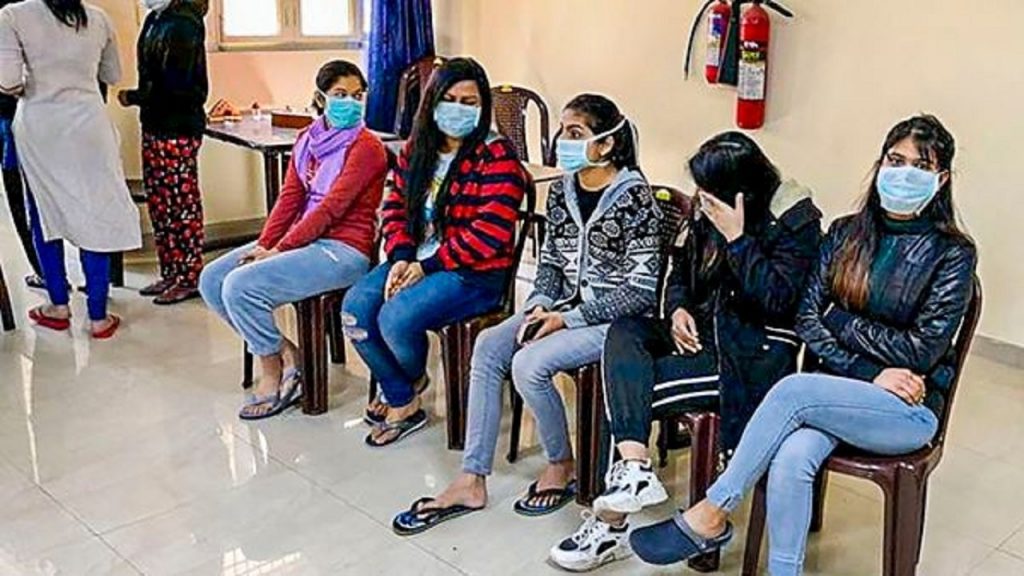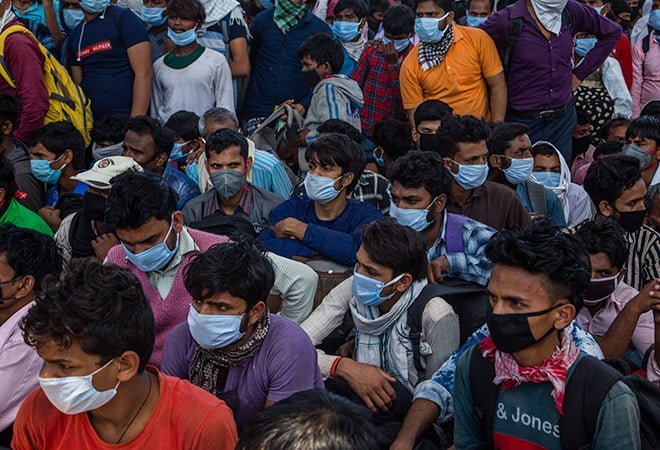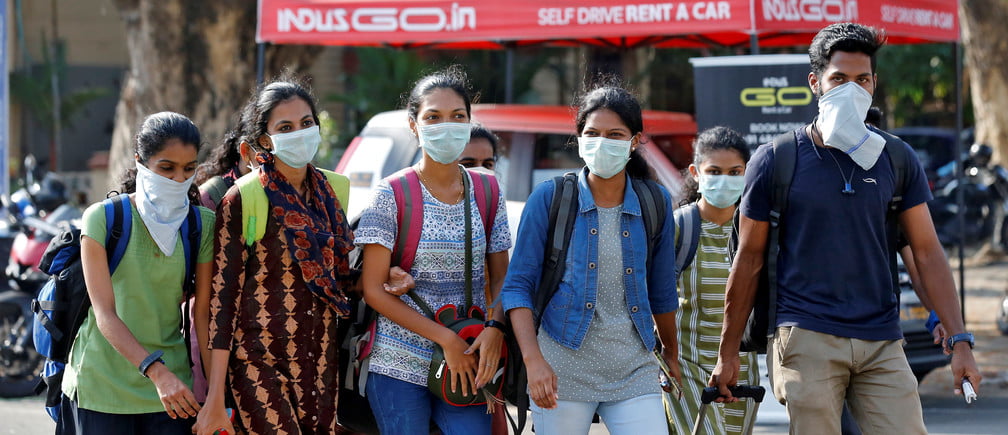Posted by Sucharita Iyer and Anshuman Ranjan Jha
As the 10to19 Dasra Adolescents Collaborative has been interacting with civil society organizations, front-line workers, and technical experts since the onset of the pandemic, a recurring theme that has come to light is the diluted focus on adolescents during COVID-19 relief and restorative measures. Insights from a recent webinar hosted by the Collaborative, show that the crisis has taken a disproportionate toll on vulnerable communities and therefore, calls for urgent attention and targeted action. As the crisis evolves, while media attention continues to spotlight the plights of various marginalised groups, adolescents and young people remain critically underrepresented in mainstream media.
At 253 million, adolescents make up over 1/5th of India’s population. However, the demographic remains invisible to policymakers undertaking institutional efforts for socio-economic development, due to which there are limited government-sponsored programs catering specifically to adolescents. The scale and extent of these systemic disadvantages put millions of adolescents at multiple health risks, ranging from teenage pregnancy, to mental health breakdowns, improper menstrual hygiene management and worse.
This has been further exacerbated by the pandemic, with the disruption in supply chains so severe, that even basic menstrual hygiene management products like sanitary pads could not be made available for women and girls. It was reported that, despite being an essential item, only 15% of India’s 121 million menstruating women had access to sanitary pads during the lockdown. Additionally, the lockdown has meant limited access to social interactions and peer groups, an unprecedented pause in access to education, and growing uncertainty as to what the future will hold for adolescents. Accompanied with a rise in reports of mental health issues and rates of anxiety and depression, it is clear that the impact of this lockdown is likely to be lasting.
The demographic remains invisible to policymakers undertaking institutional efforts for socio-economic development, due to which there are limited government-sponsored programs catering specifically to adolescents. The scale and extent of these systemic disadvantages put millions of adolescents at multiple health risks, ranging from teenage pregnancy, to mental health breakdowns, improper menstrual hygiene management and worse.
Furthermore, the stakes in this situation continue to grow. As per industry reports, the progress made so far on agency and gender egalitarian attitudes has been put at risk during the current pandemic. Gendered access to technology, the risk of girls facing early marriage, and the rise in reports of domestic violence and child abuse in lockdown indicate an urgent need to reprioritise young people in the fight against COVID-19.

As we are faced with the reality of the pandemic undoing years of hard work, there is a need to strengthen and sustain efforts for providing adolescents with access to services such as Sexual and Reproductive Health (SRH) services and menstrual hygiene products, as well as the provision of educational material and resources, the creation of safe spaces, and other legal and community entitlements.
With the situation ever evolving, there is a need to call on key stakeholders in the sector to prioritize adolescent-specific issues. Re-framing the adolescent demographic as integral to the planning process of the government, philanthropists, CSOs and other stakeholders is critical to ensure that they do not remain an afterthought.
Through focused and consistent interactions with leading civil society organizations, funding agencies, and technical experts on the issue of prioritizing and navigating investments into adolescent programming during the COVID-19 crisis, we have gathered and documented some best practices and key recommendations to share with stakeholders across the sector.
Also read: How Does Gender Inequality Contribute To Chronic Malnutrition In India?
What Can The Governments Do?
- Establish adolescents as a separate social demographic in need of attention: Often overlooked, prioritising the adolescent demographic is essential to draw government efforts and resources towards creating focused programs catering to adolescents. This, in turn, can also enable NGOs to raise funds for adolescents-specific interventions as they work to bridge what is presently a glaring gap in our social system.
- Enable decentralized decision-making: As witnessed during the current pandemic, there is a need to connect with the community in order to take into account local perspectives and learnings. As social distancing norms continue to remain in place, providing local bodies and stakeholders with the resources to prioritise adolescents at the grassroots is critical in moving forward.
- Employ tech-enabled survey tools to suit post the COVID scenario: Digital technology is playing a critical role in carrying out relief, monitoring and evaluation. As the government works to navigate the crisis, there is a need to actively develop focused surveys tailored to adolescents’ needs, and to leverage well-established systems and bodies on the ground as an opportunity to begin collecting data.
- Leverage collaborative approaches to amplify impact for adolescents: As the crisis continues to evolve, the government, academia, intermediaries, and grassroots organizations need to collaborate in order to amplify impact and draw attention towards adolescents’ issues. Collaborative action is also critical to address and bridge current last-mile service delivery challenges, such as the lack of internet connectivity/language issues.
The vulnerability of adolescents is, and continues to remain high, specifically in times of crisis. As we reinvent for a post COVID world, we must recognize that to build better futures and promote the equitable development of adolescents, it is critical for stakeholders across the spectrum to collaborate and evolve, as we work to rebuild and rehabilitate a system that has been ravaged by the pandemic.

What Can Funders Do?
- Remain flexible, responsive and understanding: As this unprecedented situation continues to evolve, funders will need to remain open-minded and understanding as organizations make necessary pivots towards relief and rehabilitation activities. Creating open channels of communication will form the cornerstone of both funders’ and CSOs’ response to COVID-19.
- Redirect funding towards the provision of localized solutions: With social distancing being a new reality, organisations are forced to revisit their interventions, to ensure that localized solutions are made available. Creating safe spaces and training girl champions to deliver programs, and working with community members, including elected women representatives (EWRs) can help ensure that adolescents remain engaged. With field staff indefinitely unable to deliver programs as before, re-examining everyday programs can be the key in keeping adolescents at the forefront of the crisis.
- Build an adolescent-focused lens into existing programs: This crisis has exposed long-standing gaps in our system, whether in the last-mile delivery of services, or in the broader structural gaps in protecting vulnerable communities. Adolescent issues are and continue to remain within the realm of broader social issues, and should be prioritised as such, with funders remaining the driving force behind enabling this shift.
Also read: How Does The Pandemic Impact Adolescents?
The vulnerability of adolescents is, and continues to remain high, specifically in times of crisis. As we reinvent for a post COVID world, we must recognize that to build better futures and promote the equitable development of adolescents, it is critical for stakeholders across the spectrum to collaborate and evolve, as we work to rebuild and rehabilitate a system that has been ravaged by the pandemic.
Sucharita Iyer works with the Dasra Adolescents Collaborative, a multi-stakeholder platform working to prioritize and empower adolescents. She has undertaken diverse research projects, and is closely involved with running the 10to19 Community of Practice. She has a keen interest in gender and adolescent issues. She holds a master’s degree in socio-cultural anthropology from the University of Amsterdam, where her focus areas were gender and migration. She has a bachelor’s degree from St Xavier’s College Mumbai, in sociology and anthropology. You can find her on Facebook, LinkedIn, Instagram and Twitter.
Anshuman is a Manager with the Capacity Building team at Dasra, working with the not-for-profits in areas of organizational resilience and impact optimization. Prior to joining Dasra, Anshuman worked with the advisory SBU of PwC India. He transitioned to the development sector after working for over a decade in management consulting where he worked in the climate change and sustainability domain. Anshuman’s initiation in the development sector started while he was working on consulting assignments for extractive industries like metals & mining, oil & gas where he got an opportunity to work closely with local communities within the project-affected areas. Anshuman holds a Chemical Engineering degree from University of Pune and Masters in Infrastructure Management from TERI School of Advanced Studies, New Delhi. You can find him on LinkedIn and Twitter.
Featured Image Source: World Economic Forum
About the author(s)
Dasra is catalyzing India's strategic philanthropy movement to transform a billion lives with dignity and equity. In 1999, Dasra was founded on the simple premise that supporting non-profits in their growth will scale their impact on the vulnerable lives they serve. Dasra accelerates social change by driving collaborative action and powerful partnerships with funders, social enterprises and other key stakeholders.




